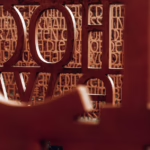The Mapmakers’ Legacy: How Historical World Maps Inform Today’s Geography
Introduction
Maps have served humanity for millennia as vital tools for navigation, education, and exploration. They provide not only a means of visualizing physical space but also insights into cultural and social contexts. While the contemporary map is often seen through the sterile lens of technology, historical maps encapsulate tales of human endeavor, creativity, and the evolution of geographical understanding. This article delves into the legacy of historical world maps and how they inform today’s geography, underpinning our modern world with layers of historical significance.
The Beginnings of Cartography
The Ancient World
The art of map-making, or cartography, dates back to ancient civilizations. Babylonian tablets from as early as 600 B.C. featured simple maps that were more symbolic than to-scale representations of terrain. In ancient Greece, philosophers like Ptolemy expanded the idea of mapping by blending geography with observational astronomy, which laid the groundwork for more accurate world maps. His work, Geographia, compiled the geographic knowledge of the Roman Empire and introduced the concept of longitude and latitude.
The Middle Ages to the Renaissance
During the Middle Ages, map-making experienced a decline in Western Europe, partially due to the chaos following the fall of the Roman Empire. However, Islamic scholars preserved and expanded upon Greek knowledge, creating intricate world maps known as mappa mundi. The most notable, the Hereford Mappa Mundi, reflects not just geography but religious beliefs and mythical creatures, showcasing the medieval European worldview.
The Renaissance marked a pivotal turn in cartographic history. The revival of classical knowledge spurred advancements in navigation and mapping techniques. Pioneers such as Gerardus Mercator with his famous projection in 1569 offered a new perspective on navigation. The Mercator projection allowed sailors to plot courses in straight lines, revolutionizing maritime navigation—a practice that remains influential today.
The Role of Exploration
The Age of Exploration
With the advent of the Age of Exploration in the 15th and 16th centuries, world maps became not merely representations of known geography but tools for exploration. Explorers like Christopher Columbus and Ferdinand Magellan contributed new geographical data, and this was meticulously recorded and disseminated through maps. Cartographers began to fill in the blanks of the known world, often exaggerating or misrepresenting landmass dimensions to fit their narrative.
The Influence of Colonialism
Furthermore, the impact of colonialism on mapping cannot be understated. Maps were utilized as instruments of power, shaping perceptions of territory and legitimacy. Colonial powers often redrew borders and named features after themselves or their sovereigns, effectively altering the cultural and historical landscape. The consequences of these actions are still felt today.
Modern Geography’s Roots in Historical Maps
The Evolution of Geographic Thought
The maps created in previous centuries gave rise to modern geographical thought and practice. Concepts such as geopolitics and geographical determinism can trace their roots back to how early cartographers represented space and culture. The visibility of borders, trade routes, and natural resources on these historical maps influenced national policies and the political landscape.
Cartographic Techniques
Contemporary mapping techniques owe a great deal to historical innovations. The transition from hand-drawn maps to satellite imagery and Geographic Information Systems (GIS) has its origins in the principles established by early mapmakers. Techniques for topographic representation, scale, and symbolization have all been refined and adapted but remain grounded in the legacy of historical cartography.
The Narrative Power of Maps
Visual Storytelling
Historical maps are more than mere geographical representations; they contain narratives and ideologies. Artifacts such as the Waldseemüller map of 1507, which is credited with naming America, illustrate how maps can embody cultural and historical narratives. Maps show priorities, fears, and desires of the societies that created them.
This narrative power is vital for modern geography, allowing scholars to interrogate the historical context behind present-day political boundaries and social issues. For instance, understanding the historical significance of a map can reveal the long-lasting effects of imperialism, facilitating discussions about reparations and identity.
Maps as Cultural Artifacts
Moreover, historical maps serve as cultural artifacts that reflect the values, beliefs, and priorities of their time. The maps that adorned 18th-century salons, such as the ones produced by Matthaus Seutter or Nicolas Sanson, were not meant purely for navigation. They were symbols of cultural capital, showcasing enlightenment ideals and colonial ambitions. Their study provides valuable insights into societal structures and prevailing attitudes of the period.
The Contemporary Relevance of Historical Maps
Climate Change and Environmental Studies
Understanding how historical maps depict land usage and natural resources can be invaluable for addressing contemporary issues like climate change. Historical data provides a baseline for comparison with present-day conditions, allowing scientists and policymakers to visualize changes in land use, deforestation, and urbanization. For example, mapping historical wetlands and forests can aid in conservation efforts, providing critical insights into biodiversity loss and habitat preservation.
Urban Planning and Development
The implications of historical mapping extend into urban planning, where city planners can use historical maps to understand growth patterns and infrastructural changes over time. A study of San Francisco’s historical maps reveals how grid systems and zoning laws have evolved, offering insights into contemporary challenges such as housing and transportation.
Education and Cultural Awareness
In educational contexts, historical maps can serve as powerful tools for fostering cultural awareness and global understanding. By analyzing the evolution of world maps, students can engage with complex topics such as colonialism, trade, and migration. These discussions can promote critical thinking about how geography shapes human experience and vice versa.
The Digital Age and Mapping
Geographic Information Systems (GIS)
The rise of Geographic Information Systems (GIS) represents perhaps the most significant leap in cartography since the Renaissance. GIS technology allows for the layering of various data types onto a single geographic framework, enabling more nuanced analyses and visualizations. While GIS relies on modern data, its effectiveness is enhanced by understanding historical maps, allowing for more informed interpretations of spatial relationships.
The Democratization of Mapping
Historically, map-making was often the domain of the elite, but the digital age has democratized the practice. Platforms like Google Earth and OpenStreetMap enable anyone to create and share maps. However, with this accessibility comes a responsibility to acknowledge and critically engage with historical cartographic legacies, ensuring that maps are used ethically and responsibly.
Challenges in Historical Cartography
Interpretation and Bias
A significant challenge in utilizing historical maps lies in their interpretation. Cartographers of the past had specific lenses through which they viewed the world. The choices they made about what to include or exclude can introduce bias, and careful investigation is crucial to avoid perpetuating misconceptions. Modern geographers must balance historical integrity with contemporary relevance when analyzing these artifacts.
Preservation Issues
The physical preservation of historical maps poses another challenge. Many ancient maps are fragile and susceptible to damage from environmental factors. Digitization efforts are crucial for safeguarding these artifacts, allowing broader access while preserving the originals for future study. Institutions and libraries play a crucial role in maintaining the archival integrity of historical cartography.
Conclusion
The legacy of historical maps is profound, extending far beyond their function as navigational aids to encompass narratives of culture, power, and identity. As we continue to navigate a complex and interconnected world, understanding the historical context of our maps provides valuable insights into contemporary geography, urban planning, climate science, and cultural awareness. The art and science of cartography remind us that maps are not merely tools but reflections of human civilization’s evolving journey.
The insights garnered from studying historical maps serve as a foundation for addressing modern challenges, offering pathways to more informed decision-making and cultural reflection. In recognizing the mapmakers’ legacy, we forge a deeper connection to our past and a more informed view of our future.
References
- Ptolemy, Claudius. Geographia. Translated by R. P. McLaughlin, University of Chicago Press, 2000.
- Woodward, David. Rivers, Edges & Maps: The Cartography of Exploration. American Geographic Society, 2018.
- Harvey, P.D.A. Historical Maps of the World. Routledge, 2004.
- Cram, George F. The New Era in Geography. Cram’s Bookstore, 1920.
- Hesse, Marco, and V. Zoren, editors. Maps and Empire: Cartography in the Age of Colonialism. University of California Press, 2011.
- Robinson, Arthur H. et al. Elements of Cartography. Wiley, 1995.
- Kramarz, P. “Mapmaking in the Modern Era.” Journal of Historical Geography, vol. 50, no. 2, 2015, pp. 45-67.
This article provides a comprehensive overview and reflection on how historical world maps inform today’s geography, relying on reputable scholarly sources for verification. If you have specific requests or topics you’d like further elaboration on, feel free to let me know!


























Add Comment